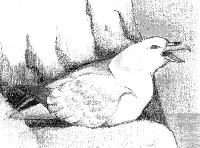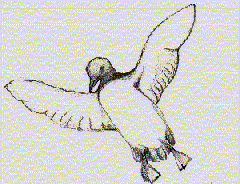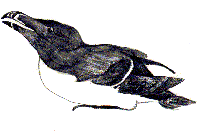 | Caithness.Org | Community | Business | Entertainment | Caithness... | Tourist Info | Site Map |
• Advertising • Chat Room • Contact Us • Kids Links • Links • Messageboard • News - Local & Scottish • News - UK & News Links • About / Contact Us • Submissions |
• Bookshop • Business Index & News • Jobs • Property For Sale • Property For Rent • Shop • Sutherland Business Index |
• Fishing • Fun Stuff • George, The Saga • Horses • Local Galas • Music • Pub Guide • Sport Index • What's On In Caithness |
• General Information • B & Bs • Backpackers • Caravan & Camping • Ferries • Getting Here • Holiday Letting • Hotels • Orkney • Pentland Firth • Sutherland • Taxis |
| N E W S F E E D S >>> |

Duncansby
|
A short walk from the lighthouse car park and you will reach one of Britain's best sea-bird colonies. Here the Old Red Sandstone Cliffs are eroded into angular blocks ideal for the birds to nest on. The offshore waters are rich in feeding for the growing chicks. A large incut eroded into the cliffs (known as Sclaites Geo) is a good place to view, hear and even smell the colony. From here along to the stacks there is much to see. Mid April to mid July are the best months for bird watching, but even in mid winter the walk is enjoyable purely for the grandeur of the scenery. The following is a description of the most common birds to be. found here.
At the top of the cliff there are pairs of gull like grey birds that are constantly displaying to each other. These are fulmar and they are related to the albatross. their numbers have expanded rapidly this century around the British coastline. Like the albatross this bird is a strong flyer and glides stiff winged around the cliffs. It lays a single, large, white egg that takes 60 days to incubate. To protect itself from attack the bird can spit out its stomach contents, an oily foul smelling liquid. On wider ledges are dense colonies of penguin like birds. These are guillemot and like the fulmar they make no nest and lay a single egg. For them there is safety in numbers, the chicks being protected by groups of adults surrounding them. The young birds will leave the ledge at dusk to avoid predation from gulls and skuas.
The razorbill differs from the guillemot as its bill is heavier and is marked by a white line. It tends to breed on the smaler ledges and cracks. Like the guillemot and puffin it can dive to great depths to hunt for fish. All these birds can live up to their late twenties.
Puffins also breed here but they are less easy to spot since for much of the time they are in burrows where they lay their egg. Look for them on earthier banks. Their bills are constructed in such a way that they can carry several fish at once.
One of the noisiest birds is the kittiwake (named after its call). Unlike other birds this elegant seagull with its yellow bill and solid black wing tips comes to land only to breed. It makes a nest out of weed and mud and lays two sometimes three eggs. A small black bird with a white wing can sometimes be seeen floating on the water around the base of the stacks. this bird, the black guillemot or tystie, nests among the boulders at the base of the cliffs. On the lowest, widest ledges sit shag. These greeny, black birds make nests large enough to hold four primitive looking chicks. the shag is smaller than the cormorant lacking the white face skin and leg patch. Like the auks it dives from the surface of the water to catch its fish. Birds seen on the Caithness cliffs in summertime move far out to sea. Look for the dark brown bird with theconspicuous white patches. this is the great skua a powerful bird that harries and piratises the other birds, robbing them of their food. they also prey on puffins and young kittiwake. Whilst some breed in Caithness peatlands, we are at the southernmost end of their breeding range. Large colonies can be found on the islands of Hoy and Handa. A more elegant skua seen swooping after the auks is the arctic skua. this bird also winters to the south returning north to breed in the spring. It has pointed wings and long tail feathers and can have a white or black belly. The largest number of skuas can be seen in autumn passage between July and September. Another summertime visitor is the wheatear, this bird uses holes and crevices in the rocks for its nest. It is particularly obvious as it flashes its white rump before disappearing over the cliffs. As well as the calls coming from the seabird colonies listen for the song of the skylark high in the sky, the "peewit" of the lapwing and the emotive call of the curlew. There are over 50 different species of bird within two miles of John O' Groats. See how many you can spot on your visit to the "end of the road!" Over the fence on the ungrazed land there is a wealth of flowers including scurvy grass (a plant that is eaten on long sea journeys as a source of vitamins) and sea pink which forms large cushions along the exposed edge of the sea. The land here is part of common grazings. All dogs should be on leads. Take your litter away with you. Keep to the landward side of the fence Text by Highland Ranger
Service & John O Groat's Promotional Group. |






